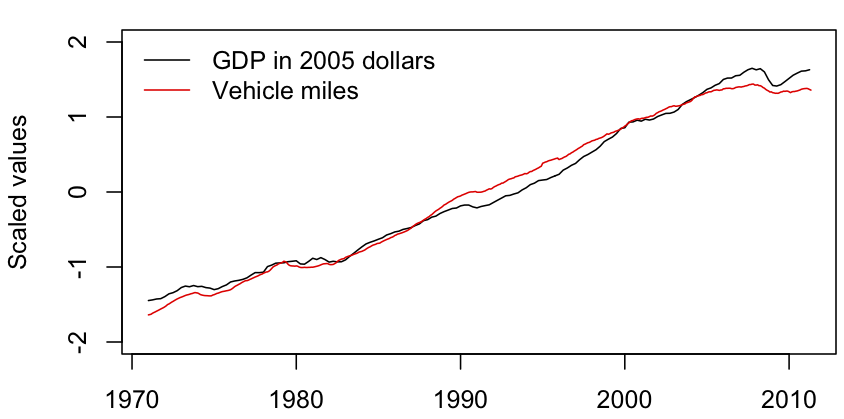Why is the US driving less?
A post today on Ezra Klein’s ordinarily-reliable blog at the Washington Post looked at statistics for miles driven in the US, and asked why this recession had led to a decrease in driving when previous recessions hadn’t. The post noted that fewer teenagers are getting driving licenses, and speculated that the internet may be replacing car-dependent ways of socializing. Which could be true.
On the other hand, when you look at a longer time series, it seems there’s nothing special about this recession except its depth.

The graph shows US GDP (in 2005 dollars) and vehicle-miles driven in the US, since the driving data started to be collected in 1971. The two series have been rescaled to the same range, and they track each other very well. Each dip in GDP is matched by a dip in driving.
The only anomaly in the graph is that the most recent dip in driving started before the fall in GDP, and that is easily explained by the spike in petrol prices at that time.
In fact, it looks as though the current Great Recession has had proportionately less impact on US driving than previous recessions. The absolute dip is larger this time, but so is the economic mess. Social media may be going save the planet, but it’s not showing up in these time series.
Thomas Lumley (@tslumley) is Professor of Biostatistics at the University of Auckland. His research interests include semiparametric models, survey sampling, statistical computing, foundations of statistics, and whatever methodological problems his medical collaborators come up with. He also blogs at Biased and Inefficient See all posts by Thomas Lumley »